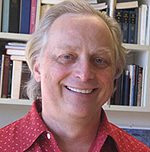November 22, 2010 - By Bruce Goldman

Peter Sarnow
Peter Sarnow, PhD, professor of microbiology and immunology, assumed the role of department chair on Nov. 1, succeeding professor Karla Kirkegaard, PhD, who took that post in 2006.
“Thank you to Dr. Kirkegaard for the significant contributions she made to the department during her tenure as chair,” Philip Pizzo, MD, dean of the School of Medicine, wrote in his newsletter. “Dr. Sarnow is well poised to assume leadership.”
The Department of Microbiology and Immunology consists of more than 25 faculty members, about 50 graduate students and over 100 postdoctoral scholars. “I’m excited about continuing to make our department a visionary force in the understanding of the microbial world around us, our reaction to it and other aspects of cellular and organismal identity,” Sarnow said. “We just hired four assistant professors. One of my main tasks will be to give these young scientists the best possible support so they can thrive and develop into leaders in their fields.”
Sarnow said he also wants to further strengthen what he characterized as a superb graduate program by introducing more non-traditional, interactive teaching styles in the classroom. And he intends to guide the department’s postdoctoral scholars so they succeed in the job market. “We can do this by encouraging participation in faculty-taught classes that teach writing, teaching and leadership skills,” he said.
Sarnow, who joined Stanford in 1996, was inducted this year as a fellow of the American Association for the Advancement of Science. He is editor of the peer-reviewed journal Virology. Sarnow’s lab focuses on two distinct lines of investigation. First, they have discovered a novel interaction between the hepatitis C virus (HCV) and a microRNA molecule specific to the liver, miR-122, that is essential for viral replication.
“An estimated 170 million people worldwide and 4 million in the United Staters are infected with HCV,” Sarnow said. “The majority of patients become chronic carriers, ultimately needing expensive liver transplants.” There is no vaccine for HCV, and current treatments are expensive and relatively ineffective.
“We discovered that HCV binds to molecules of miR-122, resulting in a novel, unprecedented upregulation of the viral genome,” Sarnow said. “If you sequester the miR-122 in the liver of HCV-infected chimpanzees, you see a 500-fold drop in viral concentrations, without any emergence of a resistant virus.” This basic-science discovery has been translated into the clinic, he said, and is now undergoing trials in human subjects.
A second research area in the Sarnow laboratory involves the molecular biology of ribosomes — molecular machines inside of cells that assemble proteins according to instructions they “read” from RNA. Certain viral and cellular “messenger RNA” molecules are read in an unusual way, Sarnow and his colleagues have found. The group is attempting to explore the implications of that alternative mode for cell regulation.
In addition to becoming chair, Sarnow will also serve on the medical school’s executive committee.
About Stanford Medicine
Stanford Medicine is an integrated academic health system comprising the Stanford School of Medicine and adult and pediatric health care delivery systems. Together, they harness the full potential of biomedicine through collaborative research, education and clinical care for patients. For more information, please visit med.stanford.edu.